Endangered Birds in Ontario
There are 12 species of birds that are classified by the Ontario government as endangered species. While they are endangered in Ontario, some may have stable populations elsewhere. However, their endangered status may be evidence of an overall decline in population and can lead to global endangerment if not resolved. There are many other endangered mammals, reptiles, fish, plants, fungi, lichens, and mosses, but that’s for another article. Today I will be summarizing the descriptions, diets, habitats, and biggest threats of these 12 endangered birds, then I will provide some ways that you can help with their protection and recovery.
The 12 birds classified as endangered by the Ontario government are: acadian flycatchers, barn owls, golden eagles, henslow’s sparrows, king rails, kirtland’s warblers, loggerhead shrikes, northern bobwhites, piping plovers, prothonotary warblers, red knots (rufa subspecies), and yellow-breasted chats.
Acadian Flycatcher
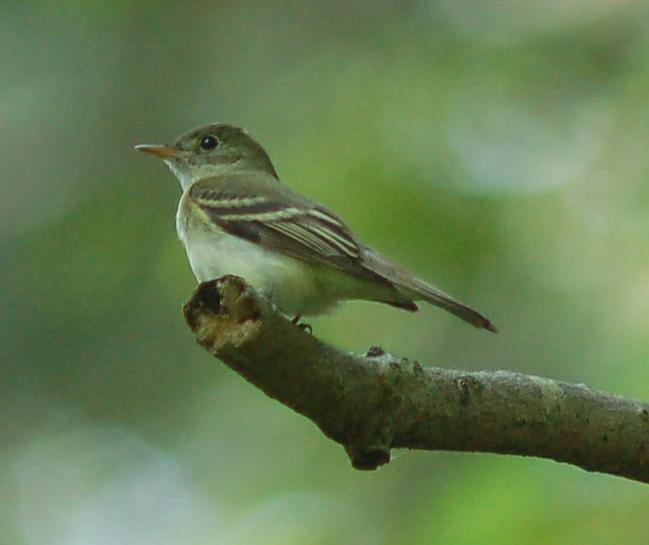
Description: 14-16.5cm tall. Olive-green with white belly and yellowish sides. White eye-rings, 2 white bars on their wings.
Diet: Insects and other arthropods.
Habitat: Large, undisturbed, mature, Carolinian forests and wetlands in southern Ontario. Preferred tree for nesting is beech or hemlock but can be found in over 20 different trees. Limbs that hang over ravines or other bodies of water are even better.
Threats: Land development, diameter-limit tree harvesting, invasive plants, pests, and diseases, irrigation projects that redirect water sources.
Barn Owl
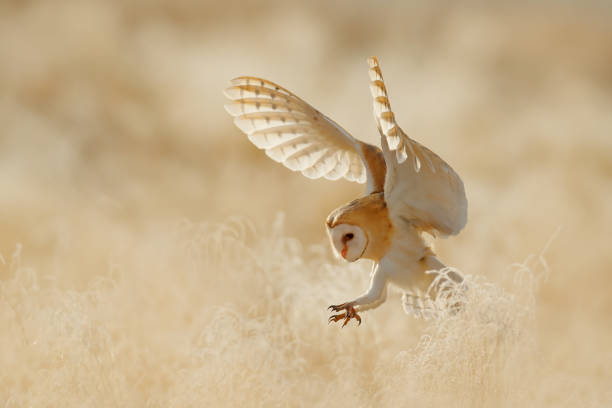
Description: 30-37cm tall. 104-120cm wingspan. White heart-shaped face, black eyes, golden-brown and grey, speckled feathering.
Diet: small rodents like voles, barn owls can be very useful for farmers who want to control rodent populations.
Habitat: Nesting boxes, barns and abandoned buildings or natural holes in trees and cliffs in southern Ontario. Barn owls may use the same nest year after year.
Threats: Land development, loss of hunting grounds (grasslands, pastures, orchards, etc.), use of rodenticides, loss of nesting areas and increase in “bird-proof” barns, road mortality.
Golden Eagle

Description: 66-102cm in length with a 180-234cm wingspan. Mostly dark brown with golden-brown feathers on back of head, neck, and wings. Unlike other eagles, their legs are completely feathered.
Diet: Small and medium sized mammals and birds, occasionally carrion (dead animals) like deer, moose, and caribou when prey is scarce.
Habitat: Remote, undisturbed areas in northern and western Ontario. Nests are in elevated locations like cliffs or particularly tall trees.
Threats: Human disturbances can scare eagles causing them to abandon offspring, illegal trappings and shootings, power line and wind turbine accidents, toxins like mercury in prey.
Henslow’s Sparrow
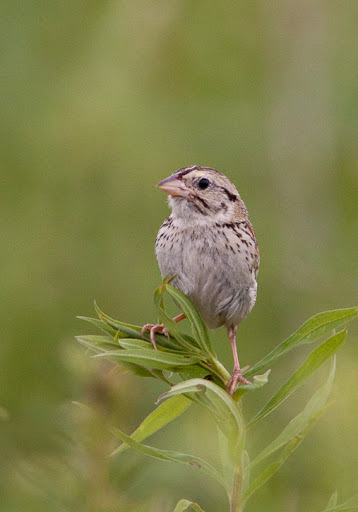
Description: 13cm in length. Brown wings, olive-green head, intricate black and brown patterns.
Diet: Insects and seeds.
Habitat: Large, open, dense, tall, grasslands provide cover for the henslow’s sparrow’s nest which it builds on the ground. Their Ontario range stretches from the south, north to Barrie and Ottawa, and all the way east to the Quebec border.
Threats: Land development, habitat loss and fragmentation.
King Rail
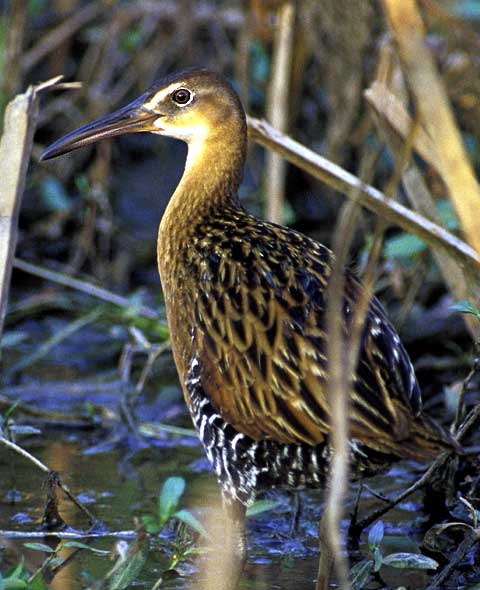
Description: 40cm tall. Long bill and long legs. Dull orange chest and neck, brown and rust colored back and wings, black and white striped sides.
Diet: Mainly crayfish and crabs, also fish, insects, and seeds.
Habitat: Densely vegetated wetlands and coastal marshes in southern Ontario surrounding the Great Lakes. They make their nests just above the water in shrubs and aquatic plants.
Threats: Shoreline development, invasive plants, marsh drainage, pollution, predation by cats, road mortality.
Kirtland’s Warbler
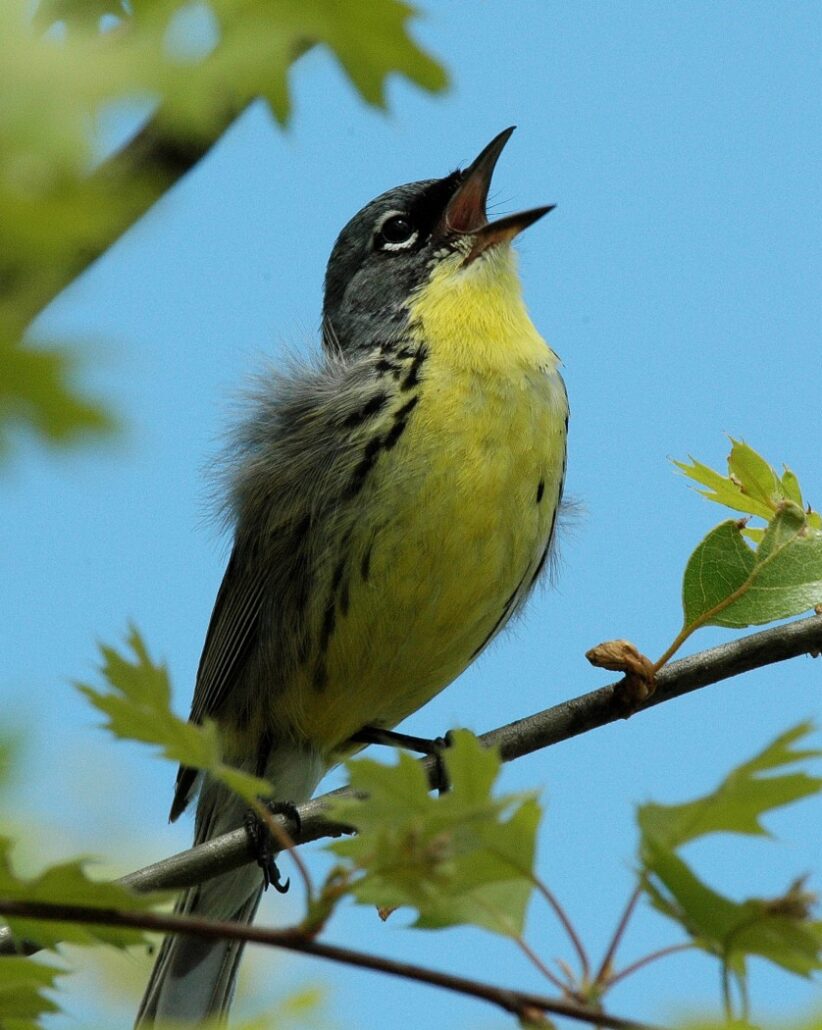
Description: 15cm long. Males have bright yellow bellies, blue-grey backs and wings, black cheeks, white eye-rings, and dark streaks all over. Females are similar but duller and with brown streaks on their backs.
Diet: Blueberries and insects.
Habitat: Kirtland’s warblers nest on well-drained, sandy soils, in large jack pine forests. They use the low branches of young jack pines and other shrubs as cover. They can be found in southern Ontario and as far north as Petawawa.
Threats: Land development, forest fire prevention (I know it sounds crazy, but many coniferous trees such as jack pines rely on forest fires for regeneration. Without fire, other species will move in and crowd out the jack pines.), nest parasitism from brown-headed cowbirds.
Loggerhead Shrike
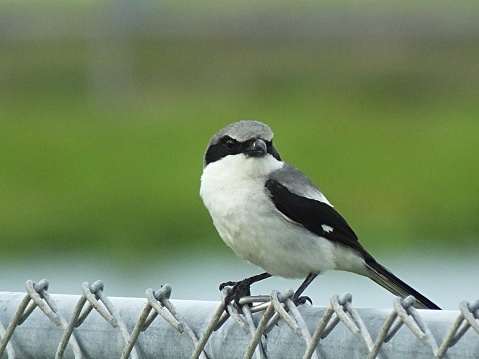
Description: 20-23cm long. Grey crown and back, white underside, black and white wings and tail. They have a black hooked beak and a black “mask” over their eyes. In other words, they look like tiny winged raccoons.
Diet: Large insects like grasshoppers. Loggerhead shrikes rely on spiny shrubs (or alternatively barbed wire) to impale their prey before eating. They can occasionally eat small birds, mammals, and frogs.
Habitat: Grasslands with scattered low trees and shrubs. They prefer areas with exposed rock which makes it easier for them to spot prey. Previously populous in the south, they are now only found in central Ontario thanks to urbanization.
Threats: Land development, insecticides, road mortality.
Northern Bobwhite
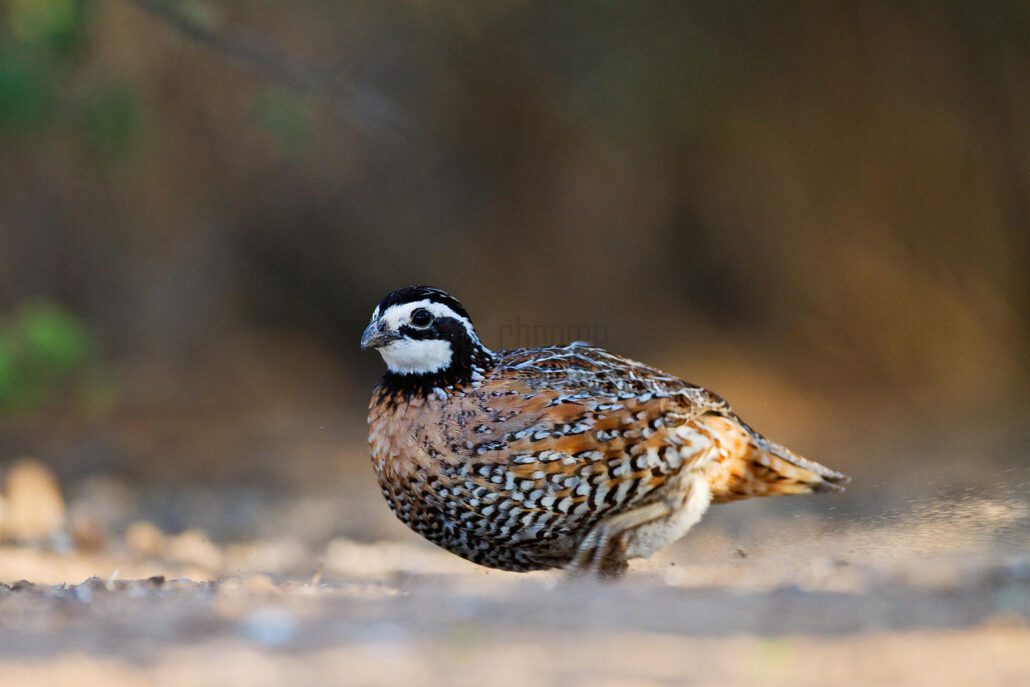
Description: 24-28cm long. They have rounded bodies and stubby tails. They have grey, brown, and rust colored patterns with white spotting. Their faces are white with a black “mask”.
Diet: Seeds, leaves, and invertebrates.
Habitat: Northern bobwhites nest on the ground in young grasslands with very few trees and shrubs. They are mostly found in southern Ontario specifically Walpole Island.
Threats: Land development, predation by cats and dogs in rural areas, pesticides, invasive plants and animals, diseases and genetic monotony from captive-bred and released bobwhites.
Piping Plover
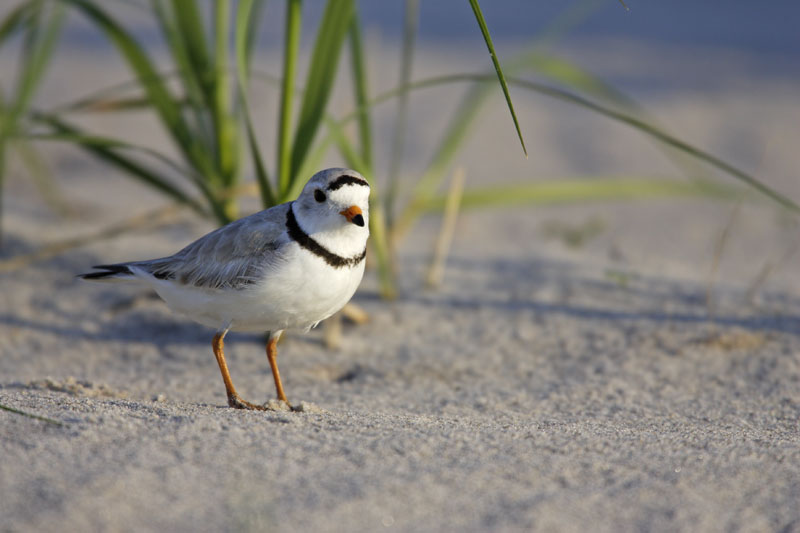
Description: 17-18cm in length. They have bright orange feet and bills with a black tip. Their bellies are white while their backs and wings are the color of sand which helps them camouflage. They have 2 black bands; one on their necks and one on their foreheads.
Diet: Insects and crustaceans found in pools on the beach.
Habitat: Wide, sandy or gravelly beaches. They are more populous on the Atlantic coast but can be found in coastal areas along the Great Lakes as well as other rivers in Ontario.
Threats: Human disturbance, groomed beaches with no cover for hiding from predators, rising water levels
Prothonotary Warbler
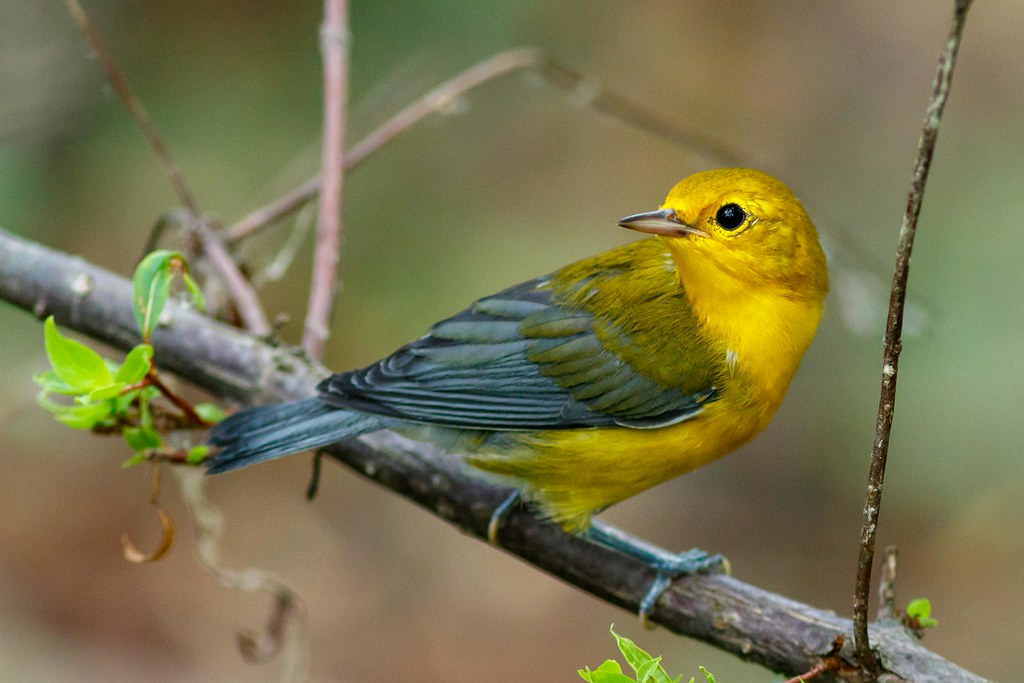
Description: 13-14cm long. Bright yellow head and belly, olive-green back, and dark blue-grey feet, wings, and tail.
Diet: insects, mollusks, fruit, and seeds.
Habitat: Prothonotary warblers naturally nest in holes in dead or dying trees but they can’t say no to a nice human-made nesting box. They are found mostly in the Carolinian forests of southern Ontario and along the shore of Lake Erie.
Threats: Land development, removal of dead trees, drainage of swamps, invasive plants and insects.
Red Knot (rufa subspecies)
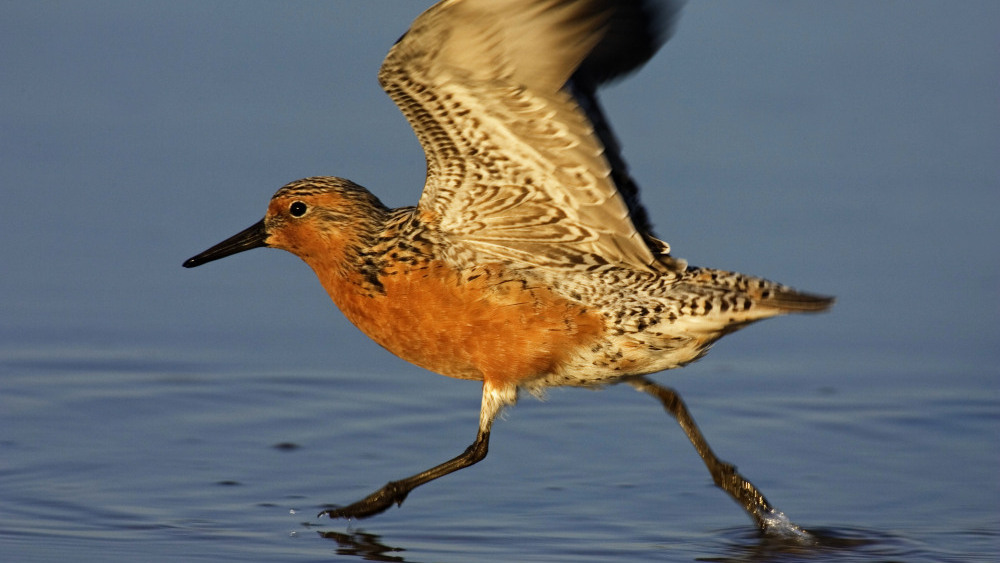
Description: 23-25cm long. They have red bellies and faces, with brown and grey speckled backs. In the winter, their red bellies and faces turn almost completely white. The rufa subspecies has a lighter red color than other subspecies. Other subspecies are also endangered but rufas are the only ones who migrate through Ontario.
Diet: horseshoe crab eggs, mollusks, crustaceans, and other invertebrates.
Habitat: Red knots love open beaches, mudflats and coastal lagoons. They breed in the central Canadian Arctic but can be seen in Ontario in the fall and spring during migrations.
Threats: Land development, unregulated horseshoe crab harvesting, human recreation, wind turbine accidents, pollution (like oil spills), climate change which heavily affects Arctic nesting areas.
Yellow-breasted Chat
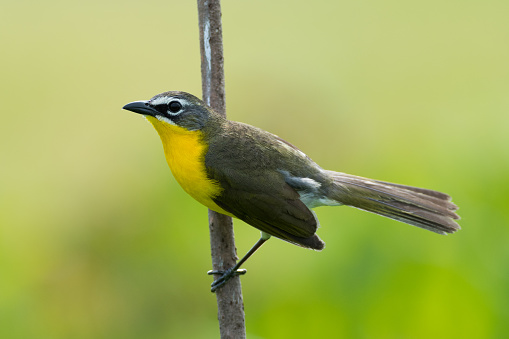
Description: 18cm long with long tails. Olive-green with white underbelly, white eye-rings, and signature bright yellow chest and throat.
Diet: Insects.
Habitat: Thickets and overgrown clearings in southern Ontario.
Threats: Land development, invasive plants and animals.
How to Protect Endangered Birds in Ontario
When you look at the different threats that these birds face, I’m sure you notice one thing that they all have in common. They are all negatively affected by humans, specifically our unending hunger for further development and expansion. These birds are not the only ones who suffer because of our actions. If we don’t start changing the way we treat the environment, we will lose everything that makes nature beautiful and we will suffer unpredictable consequences.
Protecting endangered species needs to be a combined effort for it to be affective. No single individual, organization, or government can solve every issue we face. Luckily, we have a massive supply of different types of people with different passions and callings in life. However, we all need to do our part if we hope to succeed. You might not want to take an active role in habitat conservation, but we can all at least take a moment to think before disturbing Mother Nature.
The best way for us to pitch in is to educate ourselves (and others) on endangered species as well as invasive ones. If you think you see one of the birds on this list, pull out your phone and snap a picture. The more information we have about the activities of these animals, the better we can understand their needs and put plans in place to help them. If you find any endangered animal, plant, or other organism on your land, you might even qualify for tax rebates or other conservation programs offered by the government.
Report any rare or endangered species you find here: Report rare species (animals and plants) | Ontario.ca
The same goes for invasive species. Don’t try to remove them yourself or you might end up spreading them further. Instead, document and report your findings using the Early Detection and Distribution Mapping System
Report invasive species here: EDDMapS
If the biggest threat to nature is habitat disturbance, fragmentation, and destruction, then the solution must be the opposite: habitat conservation, or even better, habitat restoration. Private landowners who choose to take action can help endangered species by actively creating new habitats.
For example, we can plant eastern hemlock and beech trees to attract Acadian Flycatchers. We can also help Kirtland’s Warblers by artificially regenerating jack pine forests. Jack pine pinecones are sealed tightly with resin and can only be opened with intense heat. However, since forest fires are less than ideal for human safety, we can open the cones ourselves and plant jack pines by hand. Every 10-15 years, the young trees become too tall to provide shelter for the warblers and young trees need to be planted. Planting tall grasses attracts rodents for Barn Owls to eat and provides cover for Northern Bobwhites. You should also consider installing a water feature if there are no nearby water sources.
We need to meet the 3 basic needs of life if we hope to attract anything: water, food, and shelter. When regenerating lost habitat, it’s important to use a wide variety of plants that are native to your region to meet the needs of your new residents.
At Carroll Property Services, we offer a wide range of garden design and planting services, specializing in native plants. If you want to learn more about how you can use your land to support endangered species, I’d love to hear from you. Give me a shout at 289-943-5477 or shoot me an email at scott@carrollpropertyservices.ca. Every plant makes a difference!
